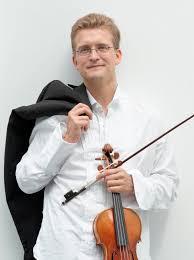San Francisco Symphony- March 19,2010
They say each symphony orchestra is different than the other in many many ways. Until now, I was really into learning the basics that this concept escaped me. But when I saw the San Francisco Symphony in action, I finally got what they meant. The difference was not only in the arrangements, the music they chose but also in the way they performed as one. They were a more contained unit.
The program started with a piece called “Post-scriptum” by contemporary composer Kissine. No offense, but I didn’t like it. It had this dreading , urgent tone that was disturbing and annoying-a smorgasbord of notes (often jarring and out of place)- no rest for the musician, no rest for the listener. There was definitely an innovative use of the sounds of the entire orchestra. But the piece was abstract and felt purposeless, always aiming towards the dramatic, as if pandering to today’s love for things “abstract”. My frustration sprang from the fact that I couldn’t connect with it at all. There were “bravos” when the piece ended, to my surprise.
Intrigued by this, during the intermission, when I asked a couple of people if they liked it, one (an older person) said that it was uncomfortable and screechy) and the other (younger one) said that she had liked it for the novelty in the tempo and musical arrangement. So I guess there was a divided house, based on my pathetic sample size. <Shrug>.
But then the second piece, a definitely classic composition by Tchaikovsky, “Violin Concerto in D Major” just gave me my ticket’s worth . Listening to the violin solo felt like stepping out onto the fresh, dew-kissed grass while the smell of the earth lingers in the air after the first rain of spring. Christian Tetzlaff has perfect technique and when he plays the high notes, especially in the recurrent melody in this piece, you can’t help but bow to his bow.

This piece touched so many moods but there was no despair of non-comprehension at the end, like the first one. The compelling beauty of the violin was hard to resist. Mr. Tetzlaff totally owned the piece.
Ravel’s piece was interesting but didn’t leave me that impressed as his other works before. The Liszt work of “lament and triumph” was intriguing and sad. In this piece, I thought that the use of the trumpets and horns as ‘highlighters” in order to emphasize a musical sequence of importance was neat. It started off on a gloomy note but grew on me.

Mr.Thomas breezed through these tough compositions and everything was executed so well. I think that kind of clockwork precision comes only with amazing natural talent as well as years of practice and hardwork. Overall, it was a great show.
That night, the triangle was used maybe seven times at the max. On my way back, I was wondering what the musician who played the triangle must feel. Maybe it is pure discipline. Maybe it is the fact that they know that they are contributing, even though it is a small role. ” They also serve who only stand and wait.”
Krithika, for [art]seen

